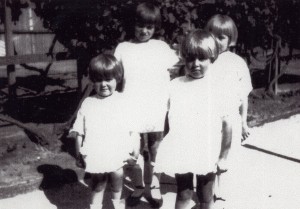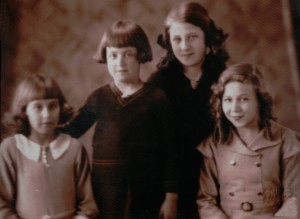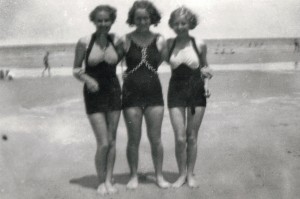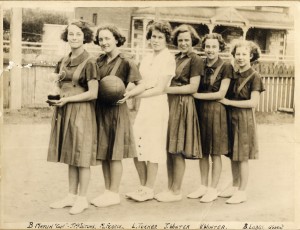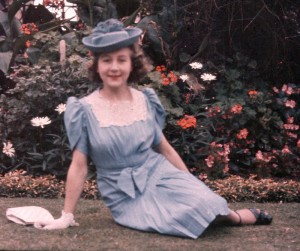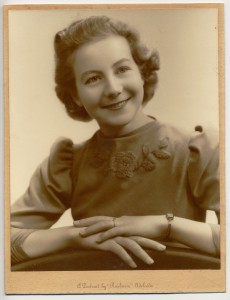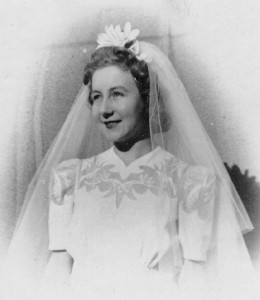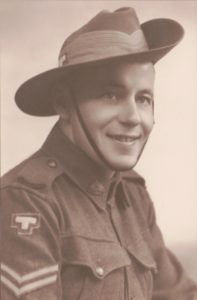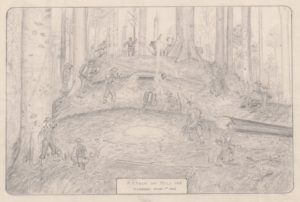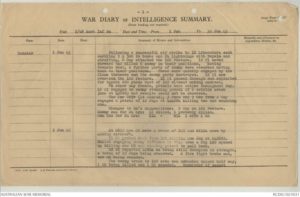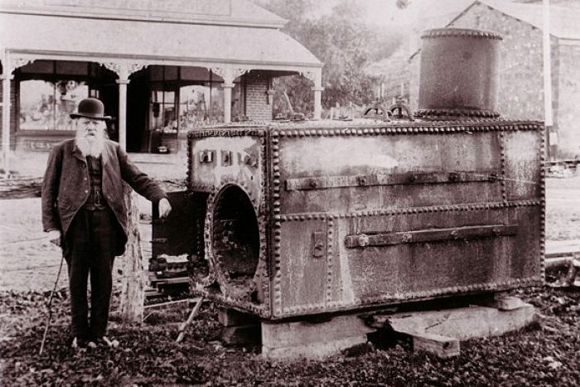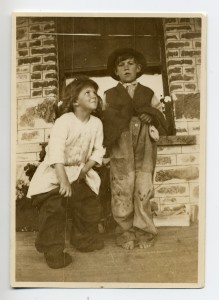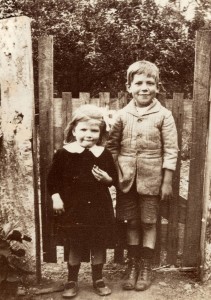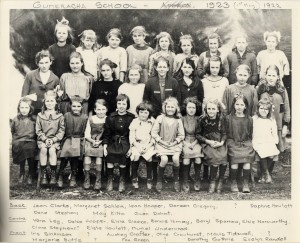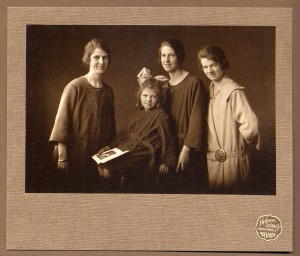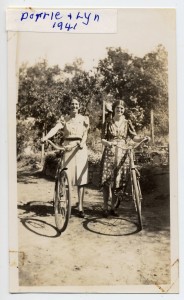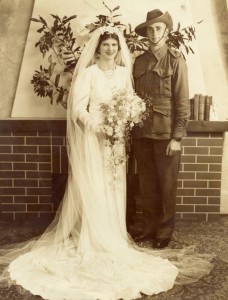Remembering Valda Irene Phillips (1921-2023)
My paternal grandma passed away a few days ago and since then I’ve been thinking about her life and my memories of her.
Valda Winter was the middle of five children born to Otto and Irene Winter, and she grew up in the suburbs of Adelaide. Her father was a Finnish seaman, who ended up in South Australia, and her mum was of English descent.
She was 101, and was very with it and independant until about the age 97 or so. I mean, she’s this tiny (and by tiny, I mean less than 5 foot something) lady, living in her own unit at that age! Remarkable eh!
But sadly there’s a lot that I didn’t (and probably won’t) know about my grandma. I did give her a copy of the “The Book of Myself: A Do-it-Yourself Autobiography in 201 Questions” which is a book that asks questions, and has plenty of room for answers to be written in. She said she would fill in for me, but sadly when we found it on her shelf, it was never written in. So maybe in retrospect, interviewing her directly would possibly have been a better option, as so many memories and stories have now been lost with her passing. And she was the last of that generation, and my last grandparent.
Unfortunately this side of the family weren’t really keepers of much at all, other than photos from more recent eras. So while grandma would have seen so many changes in life, and world events throughout her 101 years … we don’t have any written record of her thoughts on any of it.
Here’s just a few key events that happened during her lifetime:
1929 The Depression hit Australia
1932 Opening of the Sydney Harbour Bridge
1940 Pencillin was developed by Howard Florey and a team of scientists
1942 Japan bombs Darwin
1949 Australian citizenship introduced
1950 Korean War
1954 Queen Elizabeth II visits Australia
1956 Polio vaccine ends epidemic in Australia
1956 Television is launched in Australia
1958 Australia’s first skyscraper built
1966 Decimal currency introduced to NSW, Victoria, Queensland, South Australia and the ACT
1969 Man walks on the moon for the first time
1971 Daylight Saving introduced
1973 Sydney Opera House opens
1974 Cyclone Tracy flattens Darwin
1979 Australian women win the right to maternity leave
1982 Commonwealth Games held in Brisbane
1983 Ash Wednesday devastate large parts of South Australia and Victoria
the list could go on and on!!
I remember lots of wider-family get-togethers when I was younger. I remember their house at Cudlee Creek, and the sheds that got burnt in Ash Wednesday. I remember the house she and grandpa moved to when they moved to the suburbs, and their love of caravaning with friends particularly for golf trips. I remember that she had a penfriend in England for 60 or so years. I remember her passion for her Finnish heritage, as well as anything to do with the Royal family, particularly Queen Elizabeth II. Her display cabinet with royal knick-knacks was quite the collection. I remember staying with them for a week when I did work experience, so I could catch the bus into the city and back each day. I remember that back in her youth she was a dressmaker for Madam Jeanne’s bridal shop, and right thoughout the decades, she caught up the ‘the girls’ from there once a year, which was always a highlight for her. I remember that Christmas time was a big thing for her, and her house was filled with cards, so I have no doubt that she was a big card sender too.
And I remember the afternoons I went to her place to scan old photos.
Anyway below are a selection of photos from her life …
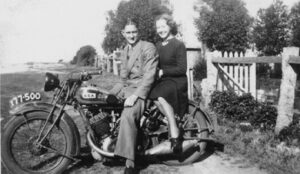
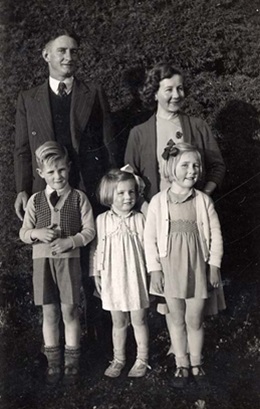
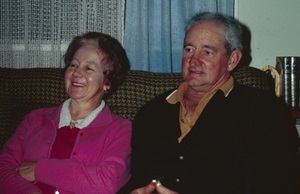
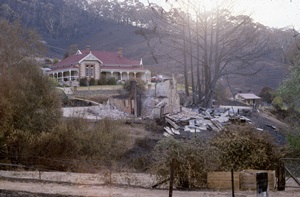
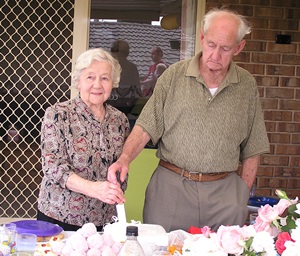
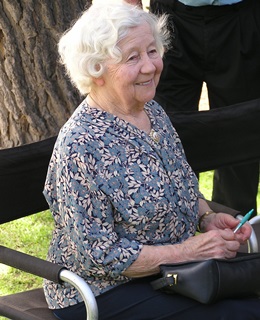
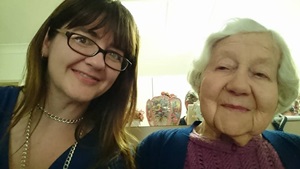
Rest in peace grandma, and I hope you’re enjoying catching up with everyone again.
Remembering Tarakan, 1 June 1945
Anzac Day, a day of remembrance of those who fought and died for our country. Whether they lived or died, nothing was ever the same again for those who went, as well as those at home.
For today’s Anzac Day post, I looked at those from my own family who were involved in war – there have been many over the years in the various wars, but this times I’ve chosen to write about Harold Roy Winter, my grandma’s brother who was involved in World War 2.
I’ll start off by saying that the military knows him as “Roy Harold Winter”, rather than “Harold Roy Winter”, simply (or so the story goes) as there was another person already signed up with that name so he switched it, so for this purpose I’ll go with the military version.
Born in Victoria, he grew up in Adelaide, and signed up as a young 25 year old ready to fight for his country. He was assigned to the 2/48th Battalion Australian Infantry Battalion, and got to see to world … and war!
Reading through the letters he wrote to family while he was in the army, he describes going overseas as a great adventure, as well as describing the monotony of army life. He also writes about the strength of the hospital staff …
“The efficiency, determination and sacrifices to their job are a magnificent credit to them, and only we who have experienced it can give a true value to their worth. In many cases, patients were being attended by orderlies who were just as ill, or in some cases even worse. Such is to the spirit of the A.I.F. and it will keep all of us going till we die or win through.”
But it was a sketch that he drew of a battle scene that I wanted to highlight today.
Captioned: Attack on Hill 102, Tarakan, June 1st 1945, I wanted to know more about this, so I headed to the Australian War Memorial’s website, and looked up their Battalion War Diaries which you can find online now. Found the one for the 2/48th Battalion, scrolled through to find the page relating to 1 June 1945 … and bingo!
The entry for 1 June 1945, says the following …Date: 1 Jun to 30 Jun 45
Place: Tarakan
Date: 1 Jun 45
Hour:
Summary of Events and Information:
Following a successful air strike by 18 Liberators each carrying 9 x 500 lb bombs and 24 Lightnings with Napalm and staffing, B Coy attacked the 102 feature. 12 Pl moved forward and killed 6 enemy in their positions. Moving back to their positions. These were quickly engaged by the flame throwers and the enemy party destroyed. 12 Pl now over-ran the 102 feature. 10 Pl passed through and exploited for approx 200 yards West of 102 without making contact.On other coy fronts, patrols were active throughout day. 16 Pl engaged an enemy standing patrol of 6 astride creek jun at 436683 but results could not be observed. The Pnr Offr (Lt SIMPER), 4 Pnrs and 9 ORs from A Coy engaged a patrol of 12 Jays at 444684 killing two and wounding one.
Changed to Bn’s dispositions: B Coy on 102 Feature.
Enemy cas for 24 hrs: 12 killed, 1 probably killed.
Own cas for 24 hrs: KIA -, WIA 1 offr 1 ORpage 1, from the Unit 2/48 AIB,War Diary, 1-30 June 1945 [AWM, ref: RCDIG1023631]
[click for a larger image]
Roy was there. He saw this happen. He saw the action, and he drew it. And this precious WW2 momento is still in the family.
After five years of travelling to various parts of the world fighting as a proud Australian, and surviving several gunshot wounds and other illnesses, Roy returned home to his wife, Vera in South Australia and settled into life after war. No doubt his injuries took their toll, as he died relatively young, at age 58, and is buried at Cheltenham Cemetery in South Australia.
Vera and Roy never had any children, so they don’t have any direct relatives, and Roy died before I was born so I never knew my great uncle, but despite that I wanted pay tribute to him.
Lest We Forget
Genealogy Close Calls
I was inspired to write this post as a result of reading Heather Rojo’s blog, Nutfield Genealogy, when wrote about her “Top Ten Genealogy Close Calls“.
The title alone intrigued me, as I wasn’t quite sure what she meant by ‘genealogy close call’. But she explains it well:
“What’s a “Genealogy Close Call”? It happens when I research an ancestor and realize that if fate didn’t intervene I wouldn’t be here today. Some of our ancestors narrowly escaped disasters, only to live on and produce a descendant that led to YOU. “
So that got me thinking. Did I have any “genealogy close calls”. My initial thoughts were no, but as the day progressed I remembered the following incidents:
MY GENEALOGY CLOSE CALLS
WILLIAM KENNARD ELPHICK (c1815-1869) – Survived the voyage
and wife SUSANNA ELPHICK (nee ELLIOT) (c1812-1899)
William and his wife Susanna married in London in November 1838, and then immediately boarded the ‘Plantar’ ship to start a new life in Australia. The journey which on average takes about four months, took almost six months partly due to the captain’s incompetence – missing a port where they were meant to collect supplies, and having to stop elsewhere as a result, together with other misadventures such which included much of the crew being lost, as were some passengers and most of the livestock. Eventually a new crew was acquired and the journey continued. For more on their story click here. The Elphick family settled in Adelaide, and had numerous children. The Elphick’s are Mr Lonetester’s 3x great grandparents. While not everyone survived this journey, they did, and if they hadn’t he wouldn’t have be here.
OTTO RAFAEL WINTER (1880-1961) – WW1 injuries
Otto Winter was born in Finland and spent 7 years sailing the world on a merchant sailing ship. I’m sure if I had detailed of every voyage there would be ‘close call’ stories there, but I don’t, so I won’t make assumptions. After having jumped ship in Australia, he chose to get naturalised and in 1916 he signed up for the Australian Army in WW1 and was sent off to Belgium. During his three years in the AIF he was wounded several times, including being shot in the stomach and poisoned with mustard gas while tunnelling at Ypres. Despite this, he survived and made it home to his young wife and baby boy. Had he not survived my grandma would not have been born. For more on Otto Winter click here.
————————
GENEALOGY CLOSE CALLS, BUT NOT CLOSE ENOUGH
ISAAC RICHARDSON (1804-1873) – sentenced to death
A labourer in Kent, Isaac Richardson together with his bother Simeon, were rioting to stand up for their rights during the Industrial Revolution. Sentenced to death, the local townspeople petitioned to save their life and both were then sentenced to transported to Van Diemen’s Land for life instead. Isaac’s wife Matilda (nee Bonner) and the two children Edward and Esther were given assisted passage in 1837-38. Isaac was granted a conditional pardon in 1842. Isaac and Matilda had a total of 9 children, and continued to live in Tasmania. Isaac’s first born child, Edward was my 3x great grandpa). As Edward was already born before Isaac was transported, this doesn’t count as a ‘close call’ for me, but for descendants of the 7 children that were born later it certainly would. You can read more about Issac Richardson here.
WILLIAM RICHARD RANDELL (1824-1911) – near explosion
William Richard Randell is known as the father of paddlesteamers on the River Murray. He emigrated with his parents from Devon, England in 1837 and initially they bred cattle and drove them along the land along the Murray River, in South Australia and later setup flour mills in the Adelaide Hills. Despite having no previous experience in navigation or having ever seen a steamboat, W.R. Randell became obsessed with building a paddlesteamer to transport supplies up and down the river. And by 1853 the “Mary Ann” which he built became the first paddlesteamer in South Australia. The boiler, a box shape, and made of lead riveted together was said to have “needed chains wrapped around the middle. Even then when proceeding at maximum speed the sides and top were observed to swell in and out like a concertina”. And while it didn’t explode, but it seems like it wasn’t far from it. William Richard Randell is a half-brother to my 2x great grandpa … so he’s not a direct relative. But had he not survived his paddlesteaming days, it certainly would affected his direct line.
GEORGE PHILLIPS (1865-1941) – nearly drowned
There’s a story that’s been handed down the generations in my family about George Phillips. George Phillips and his wife Mary Ann (nee Kemp), along with their baby boy, also George, emigrated from England to South Australia in 1865 onboard the “Adamant”. The story goes that a fellow female passenger was holding baby George, when Mary Ann had a bad feeling or premonition, so she collected him from the lady, and shortly afterwards that poor lady fell overboard. I don’t know the validity of the story, except that there was a lady who drowned on the voyage out mentioned in the surgeon’s journals. So it is a possibility. And as baby George survived, he counts as a genealogy close call, although not for me, as he’s a brother to my great great grandpa, not my direct line.
————————
While I don’t have many ‘close calls’ in this list. Ok technically only two, this just means that I have more research to do. More digging to find the stories.
Just think of all the possibilities there are, past and present: car accidents, horse and cart accidents, farm accidents, mining accidents, fires in the house, other occupational accidents, childbirth, fell down steps, numerous diseases and ailments, natural disasters (fires, floods, famine, tornado, cyclone, hurricane), major sporting injuries, a close encounter with a wild animal, or was your ancestor known for getting in fights? The list is endless …
Now I’m off to see what else I can find …
Looking Back: Photos of My Grandmas
I’ve been good recently and have been scanning a few more old family photos. Scanning isn’t the funest job in the universe. In fact it’s rather a drag. But still it is nice to have a few more done. And they are nice high res ones, named, and filed appropriately, ready for when I need to access them again in the future.
But while I was scanning some photos of one of my grandmas, I thought I’d like to share them so came up with an idea to do a mostly pictorial blog post of both of my grandma’s (maternal and paternal), and in another one I’ll show you my four great grandma’s.
So let me introduce you firstly to Evelyn Hannaford (nee Randell) my maternal grandma (1916-2006)
And that brings me to Valda Phillips (nee Winter), my paternal grandma (1921-living)

